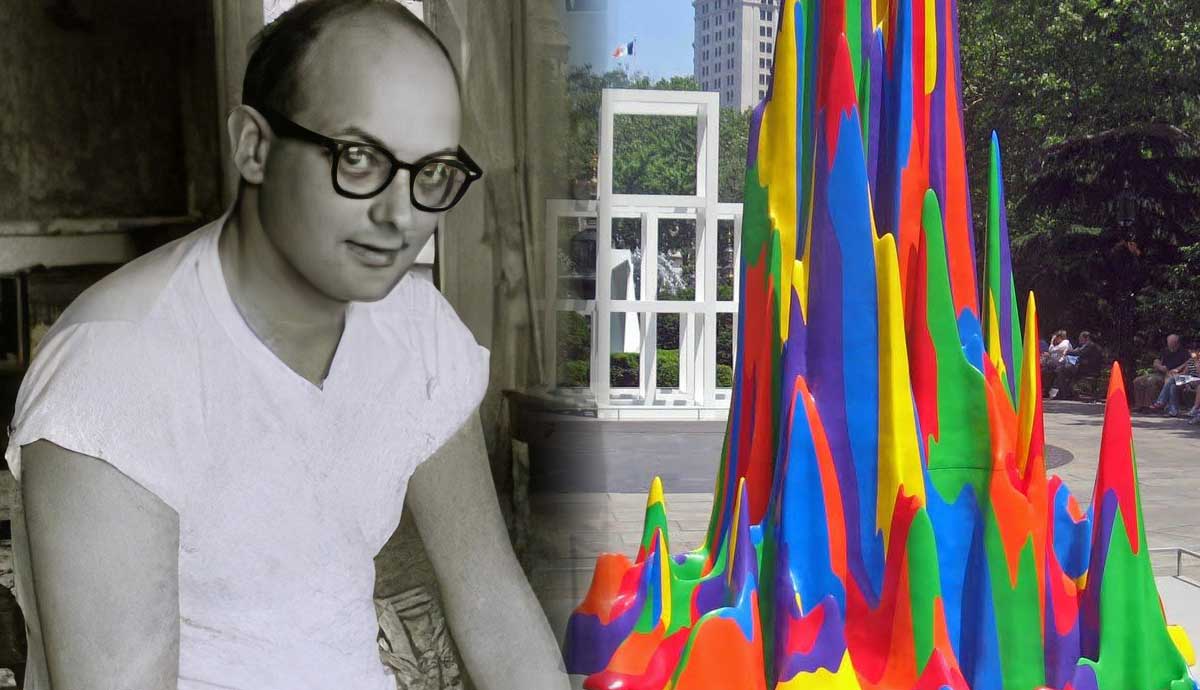
American artist Sol LeWitt was one of the most significant artists of the entire 20th century. He merged elements of Minimalism and Conceptual Art together into a long and varied career that spanned all the way from the 1960s to the early aughts. From expansive wall drawings to cuboid constructions and swirling Op Art, he produced some of the most memorable and influential artworks of the entire 20th century. As such, his presence continues to be felt in the art world today. We celebrate the vast legacy of this monumentally significant artist with a series of facts about his life and art.
1. He Began His Career as a Graphic Designer

As a young boy Sol LeWitt enjoyed creating humorous drawings, a skill he continued to develop into adulthood. After training as an artist at Syracuse University, LeWitt trained at the Cartoonists and Illustrators School, followed by an internship at Seventeen Magazine. In the 1950s he found work as a graphic designer in an architectural office in New York. Working alongside architects encouraged LeWitt to see the creative process as a concept that could be passed on to another maker to complete.
2. He Worked as a Night Guard at the Museum of Modern Art in New York

During his years as a young graduate in New York, LeWitt tried his had at painting various different subjects, with little success. But a job as a night guard at the Museum of Modern Art opened up a surprising new way of thinking – through working here he came into contact with a series of Minimalist artists including Dan Flavin, Robert Ryman and Robert Mangold. With them LeWitt shared a growing frustration with the limitations of painting, and a desire to expand into something new and unexpected.
3. Early influences Were Eadweard Muybridge and Jasper Johns
Get the latest articles delivered to your inbox
Sign up to our Free Weekly NewsletterBefore becoming a Minimalist sculptor, Sol LeWitt looked at various sources for ideas. Two of his early influences were the early photographer Eadweard Muybridge, who made sequential photography depicting movement, and Jasper Johns, who worked with simplified colors and forms to convey striking artistic statements.
4. LeWitt Is Best Known for His Cuboid Structures

During the 1960s LeWitt began to develop his first ‘structures’, a series of Minimalist sculptures made from straight pieces of wood, assembled into open series’ of cuboid forms. With these artworks LeWitt explored how forms could occupy and interact with the space around them, and how the humble cube shape could be manipulated into a surprising series of variations. During the later 1960s LeWitt’s approach to his cuboid structures became increasingly mathematical and conceptual, relying on specific ratios. He wrote a series of influential essays outlining these ideas, including Paragraphs on Conceptual Art and Sentences in Conceptual Art, both published in 1969, which cemented his place as a leading conceptual artist.
5. He Believed the Artist Was a Creator of Ideas

A fundamental aspect of Sol LeWitt’s mature art was the notion of the artist as a generator of ideas, and this became a recurring feature of Conceptual Art. LeWitt argued that the artist, much like a designer, could come up with an idea and pass this on to others to complete. He demonstrated this notion in action with his numerous wall drawings, in which he set out his plans for linear, wavy, and sometimes brightly colored wall paintings, and gave instructions to a team of assistants for them to complete. These were often temporary, only remaining in place until the close of the exhibition, before being painted over.
6. His Late Art Explored New Directions

In LeWitt’s late career he continued to experiment, playing with a variety of new ideas. These ranged from public art sculptures composed from cinder blocks, along with wall drawings featuring wavy lines and squiggly shapes which resemble the aesthetics of Op Art. He remained prolific and endlessly creative up to his death in 2007. Because his art is all about the idea, his ‘instructional’ works continue to be remade by galleries and art assistants, who remain true to the specifics of his detailed instructions.







